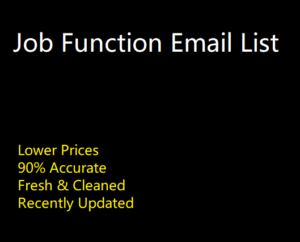Job descriptions are fundamental documents used across various aspects of human resource management and organizational functions. These written summaries outline the duties, responsibilities, qualifications, and expectations associated with a specific job position. In this article, we will explore the diverse applications of job descriptions and their significance in different facets of business operations.
1. Recruitment and Hiring:
One of the primary uses of job descriptions is in the recruitment and hiring process. When a company seeks to fill a vacant position, a well-crafted job description serves as a School Principals Email List valuable tool for attracting suitable candidates. It provides a clear overview of the job’s requirements and qualifications, enabling potential applicants to self-assess their suitability for the role. Moreover, job descriptions act as a reference point during the interview process, helping interviewers assess candidates’ suitability based on the outlined responsibilities and expectations.
2. Employee Onboarding:
Job descriptions are essential during the employee onboarding process. When a new employee joins the organization, the job description acts as a blueprint for their role and responsibilities. It provides a structured understanding of what is expected of them, helping them integrate into their new position more effectively. This clear direction fosters a smooth transition and sets the stage for improved performance.
3. Performance Management:
In the realm of performance management, are invaluable. They serve as a basis for setting performance expectations and objectives. Managers use B2C Fax to establish Key Performance Indicators (KPIs) and metrics against which employee performance is measur. This alignment ensures that employees are aware of the company’s expectations and can focus their efforts on achieving desired outcomes.

